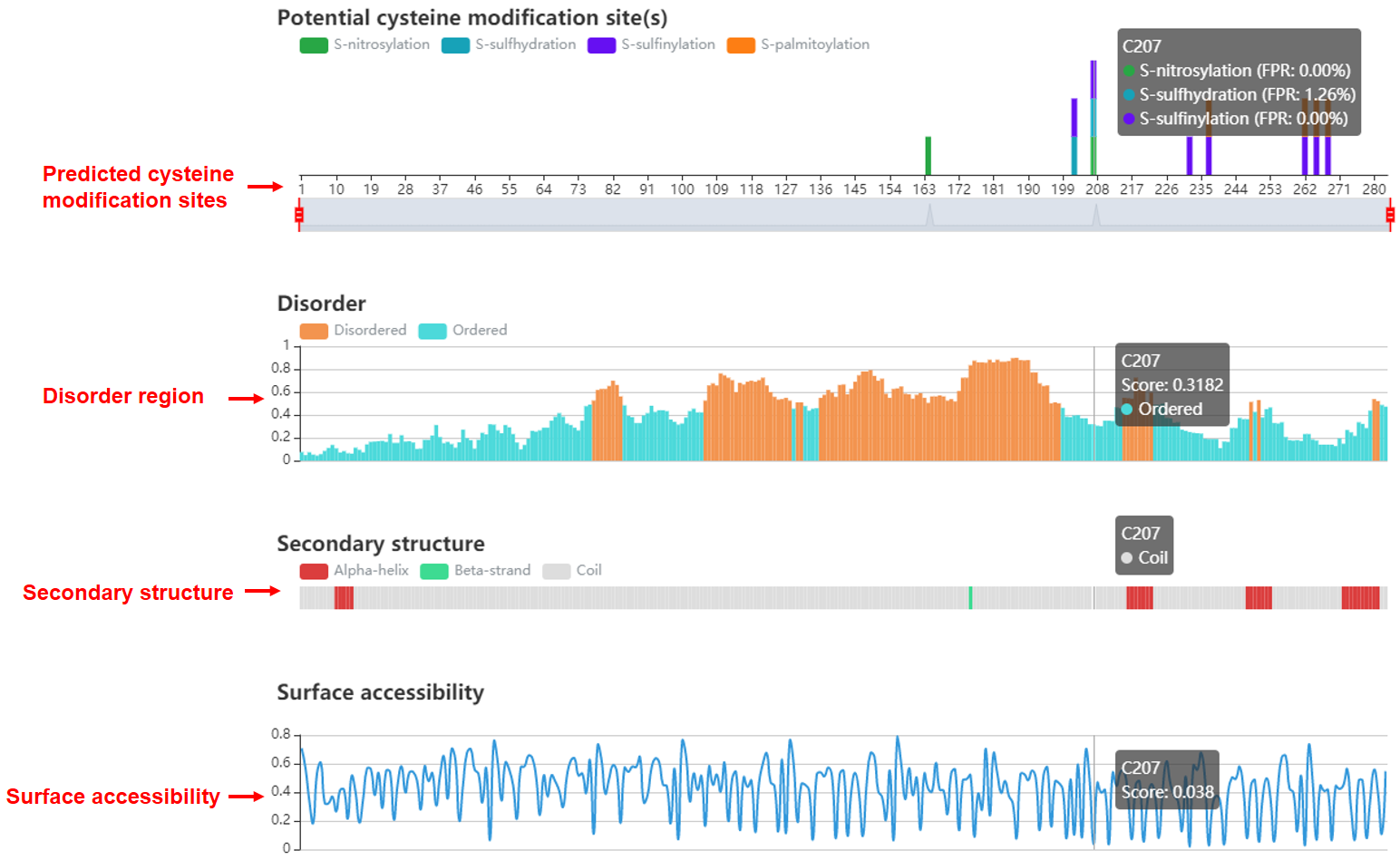Navigation
What is pCysMod
pCysMod is a web server based on deep learning to predict cysteine modification sites. Given a protein or a set of proteins in FASTA format, it can predict the possible modification sites by five types of cysteine, including S-nitrosylation, S-palmitoylation, S-sulfhydration, S-sulfenylation and S-sulfinylation. pCysMod adopted four feature extraction methods to extract the sequence information and used a deep neural network to learn them, in the meanwhile, PSO (particle swarm optimizer) algorithm was used to fine turn the hyperparameters such as learning rate, layer numbers, activation functions and so on. pCysMod has performed excellent in cysteine modification predicting.
About predicting performance
ROC for cross validation

Cross validation performance
| CysMod | Threshold | Specificity | Sensitivity | Precision |
|---|
| CysMod | Threshold | Specificity | Sensitivity | Precision |
|---|---|---|---|---|
| S-nitrosylation | High | 0.9504 | 0.2813 | 0.8498 |
| Medium | 0.9004 | 0.4259 | 0.8099 | |
| Low | 0.8502 | 0.5502 | 0.7855 | |
| S-palmitoylation | High | 0.9498 | 0.3200 | 0.8627 |
| Medium | 0.9032 | 0.4654 | 0.8258 | |
| Low | 0.8530 | 0.5709 | 0.7929 | |
| S-sulfhydration | High | 0.9500 | 0.2236 | 0.8145 |
| Medium | 0.9001 | 0.3891 | 0.7916 | |
| Low | 0.8504 | 0.4980 | 0.7645 | |
| S-sulfenylation | High | 0.9363 | 0.2692 | 0.8073 |
| Medium | 0.9003 | 0.3997 | 0.7985 | |
| Low | 0.8502 | 0.5232 | 0.7755 | |
| S-sulfinylation | High | 0.9498 | 0.2703 | 0.8162 |
| Medium | 0.9009 | 0.6094 | 0.8530 | |
| Low | 0.8514 | 0.7732 | 0.8327 |
Usage procedures
Step1: Paste your FASTA format sequence into the input textarea, or you can click the example button to run the default sequence.
Step2: Choose a kind of cysteine modification, if ‘All’ is selected, all cysteine modifications will be predicted.
Step3: Choose a threshold to get a high confidence result, the default value is ‘Medium’.
Step4: Click Submit.

Output result explanation
Potential cysteine modification site(s)
This table contains four column, including FASTA title ID, position, modication, FPR (false positive rate) and the peptide sequence window.

Secondary structure and surface accessibility
The disorder values are calculated by IUPred. The surface accessibility and secondary structure information are predicted by NetSurfP. By the way, the predicted cysteine modification sites are labeled.

Data in pCysMod
The experimentally identified cysteine modification sites used to build the prediction models in pCysMod are listed below (also provided in literature as Table S1):
| Modification | Description | Proteins | Sites |
|---|---|---|---|
| S-nitrosylation (-SNO) | All data with the modification S-nitrosylation (-SNO) | 10671 | 23041 |
| S-sulfenylation (-SOH) | All data with the modification S-sulfenylation (-SOH) | 3288 | 4978 |
| S-sulfhydration (-SSH) | All data with the modification S-sulfhydration (-SSH) | 1707 | 2721 |
| S-palmitoylation (-S-Palm) | All data with the modification S-palmitoylation (-S-Palm) | 1414 | 2766 |
| S-sulfinylation (-SO2H) | All data with the modification S-sulfinylation (-SO2H) | 538 | 742 |
